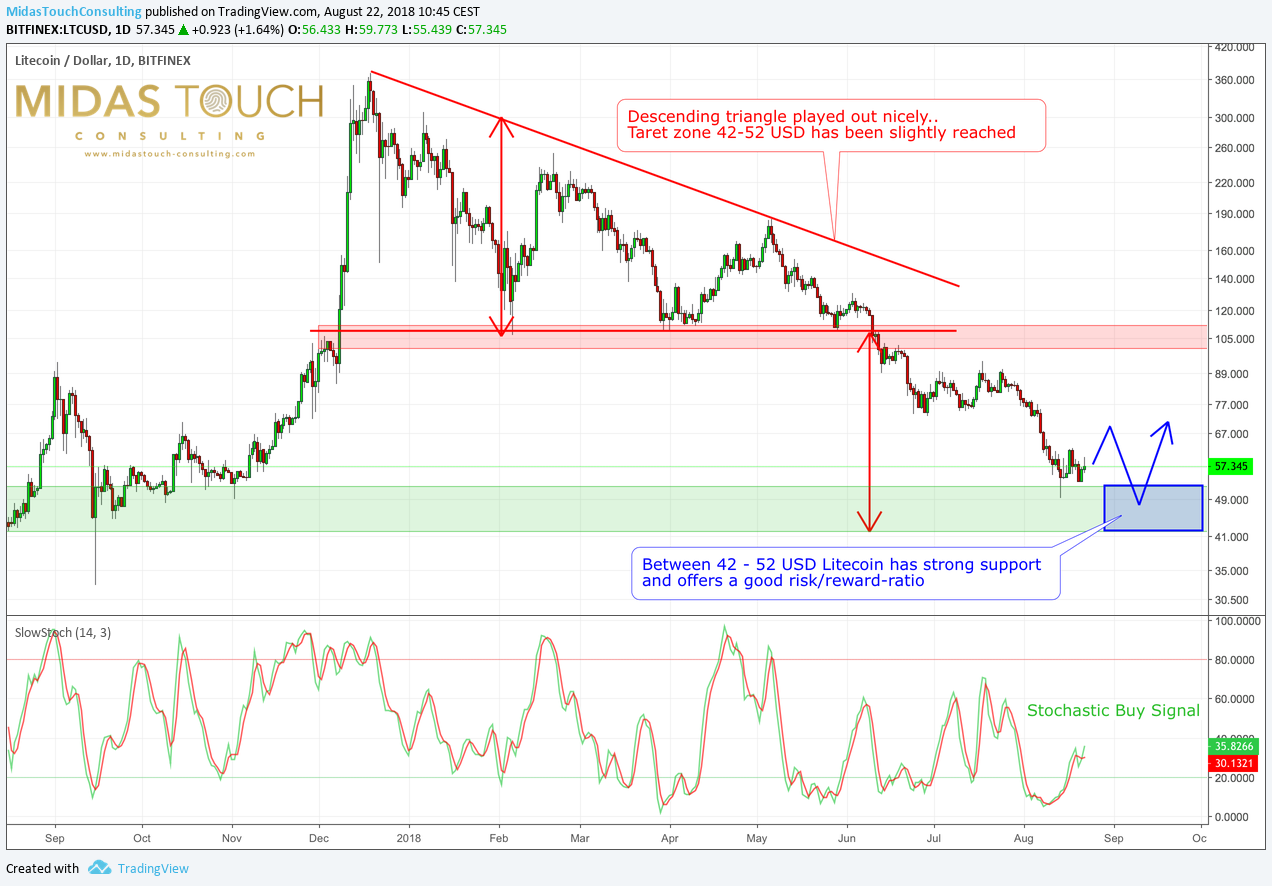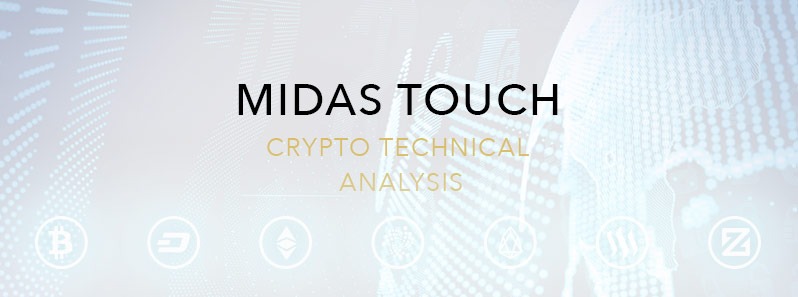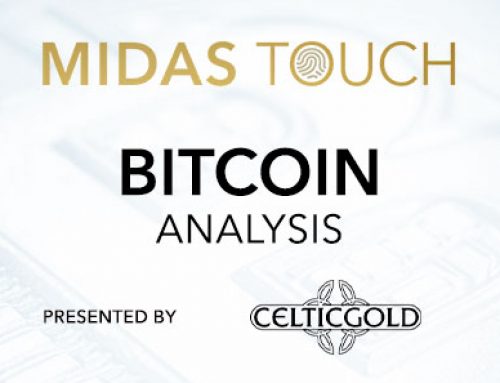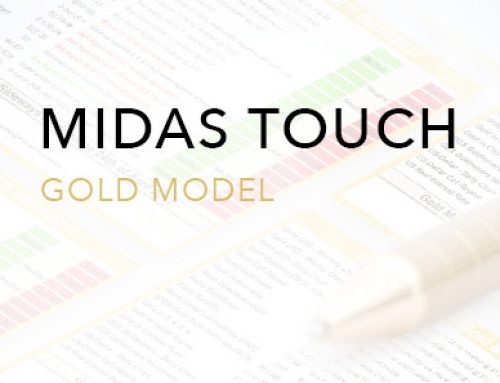Analysis: Litecoin (LTC) / Tether (USDT)
When getting introduced to cryptocurrencies, it’s no longer adequate to understand bitcoin. A few years ago, this original cryptocurrency was so far and away the leader of the market that it seemed at times like the only one worth knowing about. Since then, however, numerous “altcoins” – which is to say, alternatives to bitcoin – have grown more prominent, more valuable, and more useful. So while it’s true that as of this time none have surpassed bitcoin in value, it’s also true that anyone interested in cryptocurrency should know about the top altcoins.
One that has commonly been cited as the closest imitator of bitcoin and in some ways the pioneer of the altcoins, is Litecoin.
What Litecoin Is
If you understand cryptocurrency in general, a definition of litecoin is going to sound very straightforward. It’s an open software, peer-to-peer digital currency. With transactions verified on a blockchain and no central authority managing things, Litecoin (LTC) is essentially identical to Bitcoin (BTC) in structure and operation. It can facilitate payments all around the world with almost negligible transaction fees, and with the same anonymity and security that is at the core of bitcoin.
How Litecoin Is Different
As stated, Litecoin is effectively a replica of bitcoin in form and function. There are some differences though, primarily in market cap, coin cap, and transaction verification. Bitcoin was famously created such that there would only ever be 21 million individual coins mined, and this in some ways is responsible for its high value. A predetermined finite supply has an effect on demand and valuation. Litecoin works the same way, only with a much higher limit of 84 million coins that will ever be mined. However, according to coinmarketcap Litecoin also has a drastically lower market cap of $3.3 billion, to bitcoin’s $112.5 billion (roughly).
As for transaction time, it may be where Litecoin has its most significant advantage. If there’s a drawback to using bitcoin as a currency it’s that a block of transactions can take about 10 minutes to be verified, which means payments aren’t always instantaneous. With Litecoin, it takes about a quarter of the time, making transactions more convenient. According to Litecoin´s founder Charlie Lee the period of Litecoin transaction confirmation is shorter about only 2.5 minutes. (Bitcoin takes 10 minutes.) Some also like that Litecoin, at least for the time being, operates at a much smaller value and is somewhat closer to dealing with ordinary currency, whereas bitcoin is so valuable that a transaction might involve an amount such as 0.001 BTC, which can feel a little bit difficult to get a handle on.
Where To Use Litecoin
It’s difficult to provide any kind of comprehensive overview of where you can spend Litecoin, though it may ultimately be best to simply do a search when you’re trying to spend some (or acquire it). This is just because new merchants are always coming and going for cryptocurrencies. Right now though the biggest opportunity may be eGifter, which allows you to spend Litecoin to get gift cards to a range of other stores, and thus makes it more commercially useful. Elsewhere, Litecoin can be used in select online retail environments, at a few casino gaming sites, and at a random assortment of independent merchants that have decided to accept cryptocurrency.
Where Litecoin Can Grow
Answering the question of where Litecoin has the most potential to grow is somewhat like answering the same question for cryptocurrency in general. The obvious answer, if a somewhat vague one, is through digital retail. Sites like Overstock and Steam have at various points accepted bitcoin, and if platforms like these branch out to altcoins, they’ll make litecoin significantly more useful.
We also mentioned casino gaming sites, and these, as well as betting platforms, should also be on cryptocurrency holders’ radar. Some casino sites have already made it their business to operate with cryptocurrencies, and betting platforms appear likely to follow suit. Every bookmaker is different, and some look to gain an edge specifically through bonuses, deposit options, etc., which makes appealing to crypto holders a natural step to take.
There are of course more possibilities, but these are a few logical avenues that come to mind, and they give you an idea of what to look for if you’re interested in litecoin’s potential growth.
Daily Chart: Litecoin (LTC) / Tether (USDT)

Litecoin daily chart as of August 22nd 2018. Descending triangle played out nicely over the last couple of months..
Since its all-time high at 375 USD back in December 19th last year Litecoin has corrected sharply. The descending triangle pattern played out nicely. After breaking through its crucial support between 109 and 112 USD Litecoin rushed lower and dipped into its strong support zone between 42 and 52 USD. Currently Litecoin seems to be working on a short-term bottom, while the stochastic is flashing a buy signal.
Overall Litecoin doesn’t look too exciting here as another retreat into its support zone is pretty likely over the next couple of weeks or even months. But below 50 USD the risk/reward-ratio is in favor for a long trade or even a longterm buy. It seems as though more patience is needed here.
Conclusion
At the time of this writing, Litecoin is just under 60 USD in value. That puts it around its low for the year of 2018, with the high having been just a hair above 300 USD in January. Back then the cryptocurrency surge from late 2017 was still subsiding. It’s a wide range, but those two numbers appear to represent more or less realistic boundaries for litecoin these days – though it has been trending down.
Should we see more weakness in the coming months towards and especially below 50 USD, it would be time to be bold and step in.








